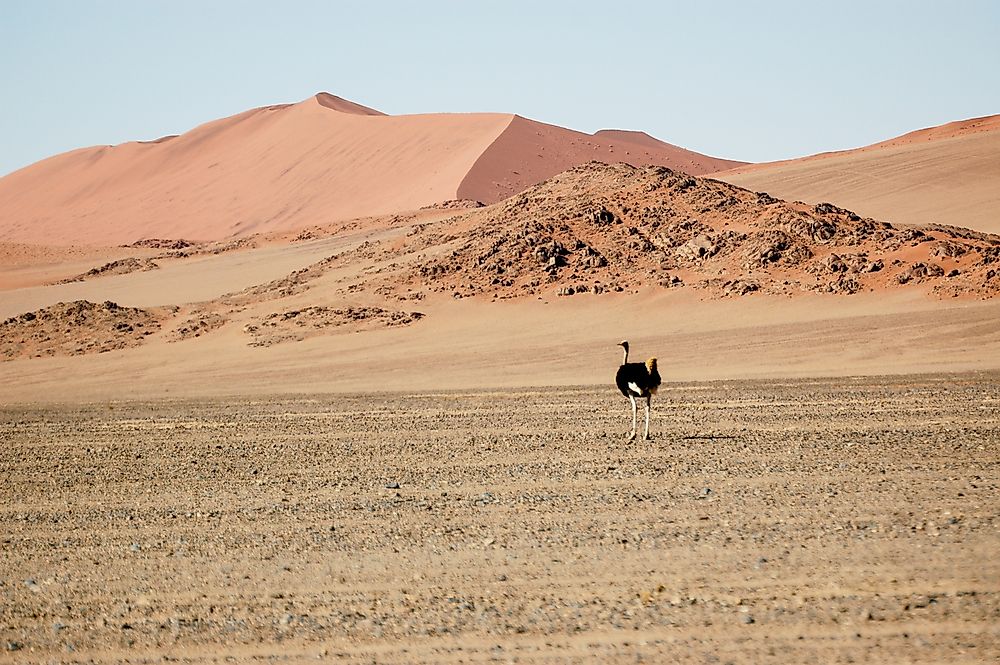What is the Oldest Desert in the World?

According to a proper and accurate definition, a desert is a barren area of land with a permanent lack of or very low levels of precipitation throughout the year and subsequent hostile weather resulting in harsh living conditions for animals and vegetation. Resting along the Atlantic coasts of Namibia, South Africa, and Angola, Namib is the world’s oldest desert. Due to the arid or semi-arid conditions of the Namib, it has been considered a desert environment for approximately 55-80 million years.
Geography and Climate of the Namib Desert
Doomed by the fame of its neighboring Kalahari Desert, with 81,000 square kilometers of area, Namib stands at the twenty-fifth position in the world deserts in terms of size. Stretching from the Usiab River in the north to Luderitz in the south, it covers an area of 2,000 kilometer in length and 200 kilometer in width (that varies from 48 kilometer to 1,600 kilometer) between the Atlantic Ocean to the Namib Escarpment.
The northern part of the Namib Desert consists of a mix of flat and rocky areas with very few sand dunes that can be found between the Walvis Bay and Swakopmund. On the other hand, its southern part displays some of the tallest and diverse dunes that vary in color from pink to orange. In the Sossusvlei region, these dunes touch a height of around 1,000 feet and transform into a complex dune formation.
Many rivers and spruits run through Namib, but these receive water only during the summer rain storms. The barren land of Namib Desert receives less than 10 mm rain every year. That results in a dry climate throughout the desert. The temperature varies to extremes as it can turn freezing cold at night and reach up to 45-degree centigrade during daylight.
The Namib Desert holds an important economic position in Western Africa for its gold, salt, and tungsten reserves.
Life in the World's Oldest Desert
Most of the Namib Desert is inaccessible while a vast area along the Orange River remains access restricted because of rich diamond mines. A large portion of the Namib Desert is protected as Namib-Naukluft National Park. A majority of native inhabitants abandoned the desert life. However, a few small settlements can be found in Sossusvlei, Namibe, Walvis Bay, Swakopmund, Sesriem, and Luderitz.
Regardless of the extreme weather conditions, Namib is home to a number of rare species of plants. One of the most prominent plants in Namib is called Welwitschia and is best known for its unique shape and survival in extreme condition.
A number of small animals like beetles, spiders, and lizards can be found in Namib. Surprisingly, there are some species of large animals as well, like meerkats, gemsboks, jackals, and ostriches. If you are lucky enough, you can also find desert elephants in some parts of the Namib Desert.











